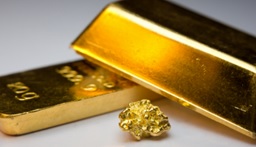Gold Surges On High Demand And Difficult Economic News

 2016 has been an interesting year for gold, and the first week of March and beyond have not changed that fact one iota.
2016 has been an interesting year for gold, and the first week of March and beyond have not changed that fact one iota.
With uncertain economic news, it’s clear that investors are placing a high demand on physical gold in order to keep their money safe in the event of a stock crash, a recession, or both. Investors have also flocked to gold ETFs to capitalize on the demand, which has led to some ETFs posting astounding performances through 2016.
One of the ETFs, IAU, made international news recently when it showed the true pressure of gold demand in 2016:
Leading Gold ETF Temporarily Suspends New Shares Due to High Demand
Blackrock Gold ETF (IAU) has been seeing so much “inflowing” and buying in that it froze the issuance of new gold trust shares. The news comes after the IAU has expanded some $1.4 billion on the year, a significant number given the $8 billion of assets under its management.
Translation: gold demand is surging, and it appears that IAU is struggling to keep up.
The blog ZeroHedge pointed out that the demand for physical gold “is finally catching up with the manipulation of paper prices.” With COMEX Registered Gold at its lowest levels in some 20 years, ZeroHedge ran the math and found that there are some 542 ounces in “potential paper claims” to every ounce of actual physical gold.
What does this mean for the common gold investor?
- If you’re interested in hedging with gold, it’s important to buy physical gold as well as gold assets like ETFs. Because there is not enough physical gold to cover all of the “claims” on gold, if there were ever a “gold run,” some investors who didn’t buy into physical gold could be left stranded.
- It appears that the demand for gold isn’t even close to running out. This doesn’t guarantee higher prices, but it can be a positive indicator if you’re already holding gold purchased earlier in the year.
Gold Prices Up Amidst Uncertain Economic News
According to Bullionvault.com, the European Central Bank is set to announce quantitative easing and a negative interest rate policy. We’ve previously talked about negative interest rates on this blog and what that can mean for the demand for gold: if banks are no longer a profitable place to store money, demand for gold may increase as a cheaper way to store wealth.
The bullion bank HSBC believes that there is some economic news worth looking at, including strong employment numbers in the U.S. But as unemployment numbers tend to be a lagging indicator of economic strength, other investors aren’t so sure that they’re feeling as optimistic about equities and the global economy going into the rest of 2016.
The January 2015 high for gold, some $1,308, is a benchmark that many investors are looking at. With gold currently trading at about $1,270, that number doesn’t appear far off—particularly if patterns in gold and physical gold demand hold up and the economic numbers continue down their current path.

















